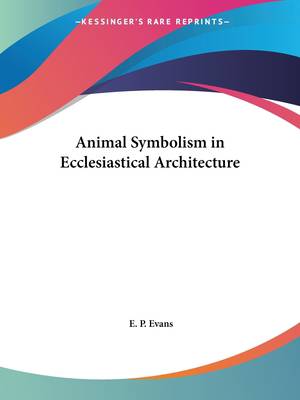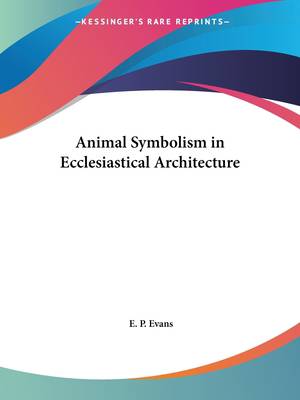
- Retrait gratuit dans votre magasin Club
- 7.000.000 titres dans notre catalogue
- Payer en toute sécurité
- Toujours un magasin près de chez vous
- Retrait gratuit dans votre magasin Club
- 7.000.0000 titres dans notre catalogue
- Payer en toute sécurité
- Toujours un magasin près de chez vous
48,95 €
+ 97 points
Format
Description
Animal Symbolism in Ecclesiastical Architecture is a book written by E. P. Evans, which explores the use of animal symbolism in the design and decoration of churches and other religious buildings. The book covers a wide range of animals, from the familiar such as lions and eagles to the more obscure like the pelican and the unicorn. The author examines the origins and meanings of these symbols, exploring their use in various cultures and religions throughout history. He also discusses the ways in which these symbols have been incorporated into Christian iconography and how they have been used to convey theological concepts and ideas. The book is richly illustrated with photographs and drawings of animal symbolism in churches and other religious buildings from around the world. It is a valuable resource for anyone interested in the history of religious art and architecture, as well as those interested in the symbolism and meaning behind the images and motifs found in these structures.1896. In this volume, the author endeavored to show the rise and evolution of animal symbolism, and its transition to satire as seen in Christian art. This book is not an exhaustive treatise of the subject. The appended bibliography taken in connection with the references given in the body of the work will be found to contain the principal sources of information. Richly illustrated throughout.This scarce antiquarian book is a facsimile reprint of the old original and may contain some imperfections such as library marks and notations. Because we believe this work is culturally important, we have made it available as part of our commitment for protecting, preserving, and promoting the world's literature in affordable, high quality, modern editions, that are true to their original work.
Spécifications
Parties prenantes
- Auteur(s) :
- Editeur:
Contenu
- Nombre de pages :
- 388
- Langue:
- Anglais
Caractéristiques
- EAN:
- 9780766150027
- Date de parution :
- 28-04-03
- Format:
- Livre broché
- Format numérique:
- Trade paperback (VS)
- Dimensions :
- 210 mm x 278 mm
- Poids :
- 902 g

Les avis
Nous publions uniquement les avis qui respectent les conditions requises. Consultez nos conditions pour les avis.






